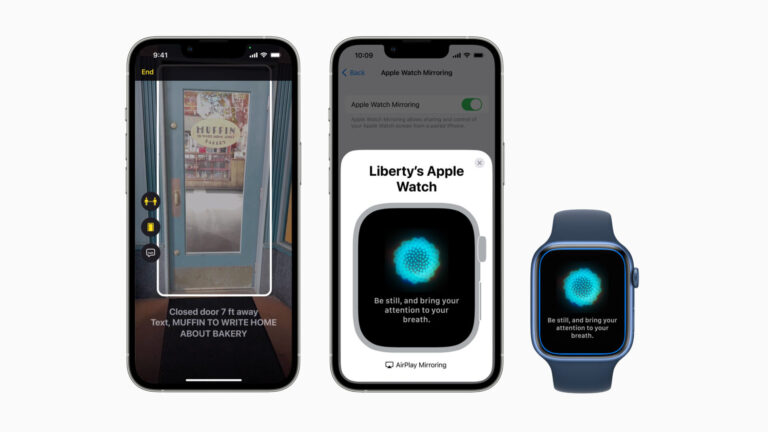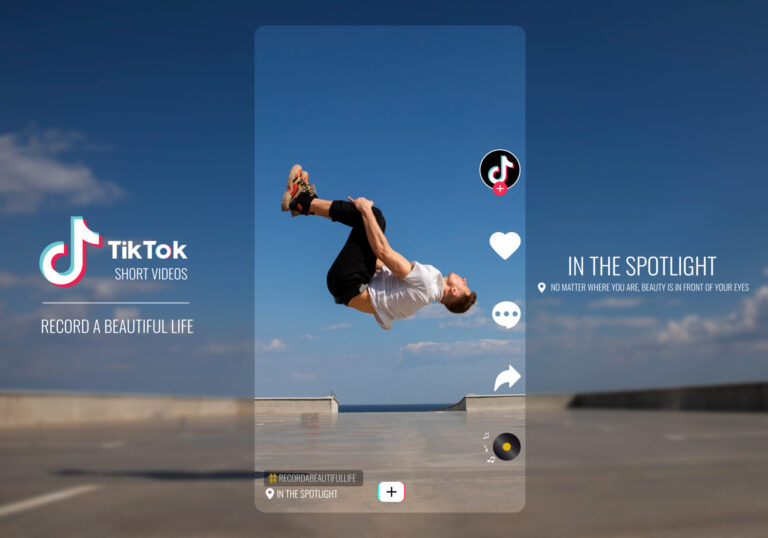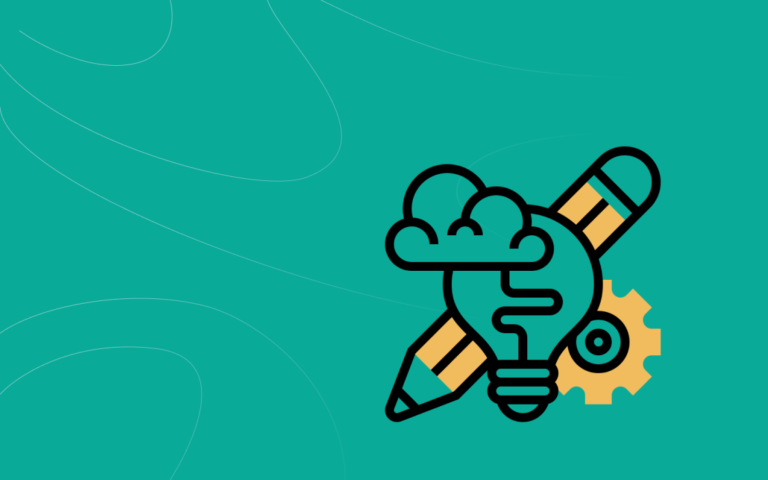Table of Contents
The word ‘product’ often brings to mind store shelves lined with goods. Yet, in the design world, its meaning is much broader. For designers, a product could be anything from an app or website to a tangible consumer item.
In the domain of digital products and enterprise solutions, product design takes on a vital role.
Beyond aesthetics, product design focuses on crafting functional, user-friendly solutions that not only meet specific business needs but also significantly improve user engagement.
A well-thought-out design can elevate a digital product from being merely functional to becoming an indispensable part of a user’s daily life, driving both user satisfaction and business success.
What is the product design?
In nutshell, product design is the process of identifying a market need, pinpointing the specific issue, crafting an appropriate solution, and then testing this solution with actual users.
It is not bound by strict rules; there are many approaches to product design. Remember that the most successful products often stand out due to their unique features.
What is the design thinking?
Have you heard of design thinking? Developed by David Kelley and Tim Brown of IDEO, this approach is shaking up product development process.
At its core, it’s a problem-solving approach that centres on deeply understanding users’ needs and experiences. This method involves five key stages:
- empathising with users
- defining the problem
- ideating solutions
- prototyping
- testing
Incorporating this approach into product design process ensures that the solutions are not only innovative but also human-centred.
It moves beyond traditional design practices by focusing on creating products that resonate with users on a deeper level.
What are the benefits of customer-centric design?
Seasoned business leaders understand that the actual value of a customer-centric design strategy lies in its benefits. Let’s explore the advantages of adopting a customer-centric design approach.
Increased customer satisfaction
By embracing customer-centric design, businesses commit to understanding their customers’ needs, preferences, and challenges.
This insight helps them develop products and services that genuinely meet customer expectations. Tailoring offerings to their audience ensures that customers feel recognised and valued.
Improved business performance
One can’t deny that happy customers often share their positive experiences, acting as organic promoters of your brand. Their recommendations to friends and family can significantly expand your customer base without expensive marketing efforts.
Competitive advantage in the market
In the business environment saturated with competition, how one can stand out? By prioritising customers. Having similar products and services on the market, customer-centric design becomes a key differentiator.
Great example: what are the best digital product design?
Apple excels by designing for diverse user needs and continuously improving its products for greater accessibility and usability.
You won’t be surprised that Apple offers features like VoiceOver, Zoom, and Braille support for users with vision impairments, assisting them in understanding screen content.
At the same time, Apple provides subtitles for various media, including videos and conversations, to accommodate those with hearing difficulties.
For individuals with limited mobility, Apple includes features like voice navigation and controllable devices via eye movements, enabling device usage without physical touch.

Additionally, Apple addresses cognitive challenges by designing interfaces that minimise distracting background noise and visuals, catering to users with different cognitive needs.
Netflix skilfully navigates the challenge of choice overload with its clever design approach. Faced with a massive library of shows and movies, Netflix makes selection manageable and engaging through personalised recommendations.

Netflix’s streaming service is compatible with gaming consoles, phones, and several other devices, maintaining a user-friendly interface.
This blend of compatibility and personalisation in Netflix’s design has set a benchmark in the media streaming industry, creating a distinctive user experience.
TikTok is the top-rated social media app which has transformed user experience through its innovative design.
Key features include a full-screen feed for an immersive viewing experience, user-friendly interactive elements, and a never-ending flow of short, personalised content tailored to diverse user interests.

Furthermore, TikTok improves accessibility with features like auto-captions and photosensitivity warnings.
These design choices contribute to its global popularity and user-friendliness, underscoring the significance of thoughtful product design in achieving success.
How can new technology contribute to product design?
It is safe to say that the user requirements constantly change. This tendency has created many new approaches to product design.
Virtual reality and product designing
Virtual reality (VR) emerges as a new frontier, drawing product designers into uncharted territory. Here, the cardinal rule is to prototype before creation, ensuring every product offers a unique and innovative user experience.
VR is reshaping the design landscape, as seen in the automotive industry. For example, Volvo uses VR to create virtual showrooms, allowing customers to experience different car models.
This approach not only takes customer engagement to the next level but also streamlines the design process, enabling rapid prototyping and immediate feedback.
Machine learning and product designing
Today, data is abundant, and its volume grows daily. Machine learning is transforming product design with its ability to analyse vast datasets for insights.
Take Spotify’s use of machine learning algorithms, for example. These algorithms personalise the user experience by curating music playlists based on listening habits.
This not only improves user engagement but also informs Spotify’s content acquisition strategies and user interface design decisions.
What are common challenges in designing for digital products and enterprise solutions?
When designing for digital products and enterprise solutions, several common challenges arise that can significantly impact the success of a product. Here are some of these challenges:
Understanding user needs
Designers should deeply understand their users’ needs, which requires thorough research and user testing. Misinterpreting these needs can lead to a product not resonating with its intended audience.
Complexity management
Enterprise solutions often involve complex systems with numerous features. Making these systems accessible and user-friendly without oversimplifying can be challenging.
Integration with existing systems
Digital products often need to integrate with existing legacy systems within an enterprise. Ensuring compatibility and smooth operation across systems can be a significant hurdle.
Security and compliance
Digital products must adhere to strict security protocols and compliance regulations, especially in enterprise environments. Balancing user experience with these requirements takes a lot of work.
Scalability
Products must be designed to scale, accommodating growing numbers of users or data volume without performance degradation.
Cross-platform consistency
Ensuring a consistent experience across various devices and platforms can be challenging due to differing standards, screen sizes, and operating systems.
Data visualisation and management
Effectively visualising large data sets for user-friendly decision-making is a specialised challenge in enterprise solutions.
Product designers working on digital products and enterprise solutions must navigate these challenges thoughtfully to create successful, user-friendly products that meet business objectives.
How to use product design approaches for digital products and enterprise solutions?
Businesses should develop a comprehensive strategy integrating various principles and methodologies to streamline their solutions. Here are key steps and considerations:
- Start by conducting thorough user research. As never before, it is important to understand your users’ needs, behaviours, and pain points. Use surveys, interviews, and usability tests to gather insights.
- Clearly define what you want to achieve with your digital product or enterprise solution. This could be improving user experience, increasing efficiency, or solving a specific problem.
- Design with the user in mind. Ensure the user experience is intuitive, engaging, and meets the users’ needs. This involves creating personas, user journey maps, and wireframes.
- Adopt an iterative approach to design. Develop prototypes and continuously test them with users to get feedback. Iterate based on this feedback to refine the product.
- Agile methodologies like Scrum or Kanban can effectively manage product design projects. They allow for flexibility, adaptability, and continuous improvement.
- Leverage data analytics to understand how users interact with your product. This data can provide valuable insights for making informed design decisions.
- Finally, consider product design as an ongoing process. You should continually seek to learn and improve, adapting to user feedback, technological shifts, and market changes.
By implementing these strategies, you can effectively leverage product design to improve digital products and enterprise solutions, ultimately leading to better user experiences and business outcomes.
See also: What is Conceptual design?
Bottom line
Today, product design stands as a key element that goes beyond mere aesthetics. It’s a journey that begins and ends with people – understanding their needs, solving their problems, and streamlining their experiences.
Therefore, let us embrace the challenges and opportunities ahead. As a team of design experts with 10+ years of experience, we know how to communicate with a specific audience and do it with empathy. We can help your business with the following:
- Improve user experience, along with product usability, accessibility, and overall user satisfaction
- Improve the aesthetic appeal of a product, strengthening brand identity and consumer perception
- Tailor products to different market segments or adapt them to changing market trends
- Increase site visibility
- Build a brand from scratch, and much more.
Experience the captivating journey from concept to market-ready product as we bring your vision to life with expert precision and creative flair. Contact us for more information.







One Response
Such an insightful guide on leveraging product design approaches! Your comprehensive breakdown offers invaluable insights for anyone looking to enhance their product development strategies.